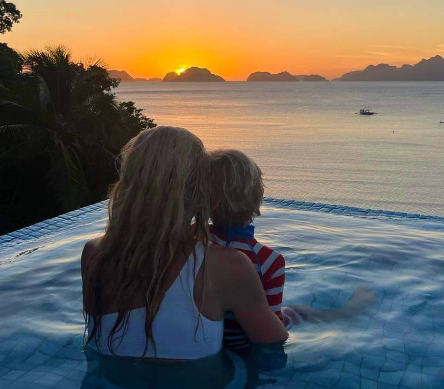The Amazon Rainforest, the Pacific Coast, and the Andes Mountains are just a few of Peru’s breathtaking scenery. The nation is primarily characterised by three distinct climate zones: coast, forests, and mountains. You need to be an expert in these areas if you want your schedule to be comprehensive.
- Costa: What characterises the coastal region are warm temperatures and dry desert conditions. Situated in this zone, the capital of Peru, Lima, enjoys a pleasant climate throughout the year.
- Sierra: Mountain towns like Cusco and Arequipa are popular destinations because of the relative coolness they provide. Because of the unpredictability of high-altitude weather, it is recommended to bring layers.
- Selva: The tropical setting of Selva, in Peru’s eastern Amazon Rainforest, is defined by extreme humidity and frequent rainfall. It is possible to reach the Amazon from two major cities: Iquitos and Puerto Maldonado.
Table of Contents
Cultural Highlights
1. Machu Picchu: The Lost City of the Incas
Any trip to Peru must include a stop at Machu Picchu, one of the New Seven Wonders of the World. Perched precariously in the Andes, this crumbling Inca citadel offers breathtaking views and insight into the ingenuity of the Inca civilisation. You have two options for getting to Machu Picchu from Cusco: taking the train or walking the Inca Trail.
2. Cusco: The Imperial City
Historic Cusco, capital of the Inca Empire, is one of the most historically significant cities in the world and a UNESCO World Heritage site. Take a leisurely stroll through the narrow streets bordered by Inca walls, investigate the Plaza de Armas, and stop by the Qorikancha Temple. Cusco is the epicentre of many adventure activities, including mountain biking, white-water rafting, trekking, and more.
3. Lima: Culinary Capital of South America
Culinary paradise awaits you in Lima, Peru’s capital. Famous Peruvian meals like ceviche and lomo saltado incorporate flavours from Asian, indigenous, and Spanish cuisines. Barranco, Lima’s historic centre, and the several Barranco and Miraflores areas are great places to sample the city’s vibrant culinary culture.
4. Arequipa: The White City
The stunning white volcanic stone architecture of the charming city of Arequipa has brought it fame, and it is surrounded by majestic volcanoes. Indulge in some rocoto relleno while you’re at the Santa Catalina Monastery, which is like a little city all by itself. Colca Canyon, one of the world’s deepest canyons, is accessible from Arequipa and is a good place to witness the Andean condor soaring through the air.
Outdoor Adventures
1. Inca Trail Trek
Embarking on the fabled Inca Trail to Machu Picchu promises to be an arduous but rewarding journey. From lush cloud forests to high mountain passes, the four days of walking will take you through it all. If you’re lucky, you can catch a glimpse of Machu Picchu as it rises to its full glory before anybody else at Inti Punku, sometimes called the Sun Gate.
2. Amazon Rainforest Exploration
It is my deepest belief that ecotourists will never forget their time spent exploring the Amazon Rainforest. As you view many different kinds of animals and learn about their civilizations, you may do both on a river cruise in the Amazon. In addition to providing a cosy home base for Amazonian exploration, the hotels in Puerto Maldonado and Iquitos also provide guided hikes, canopy walks, and animal tours.
3. Huayna Picchu Climb
Ascending Huayna Picchu, a steep summit that commands a panoramic view of Machu Picchu, will be well worth the effort. The path is steep, contains stone steps, and narrow corridors; yet, the views from the peak are breathtaking, making it an adventurer’s must-do.
Practical Tips
1. Altitude Sickness Precautions
Because of Peru’s unusual topography, residents of Cusco and other high-altitude cities are at a higher risk of experiencing altitude sickness. Take it easy, drink lots of water, and consider taking medicine if you feel the need over the first several days. Cocoa tea is another ancient remedy that has been known to alleviate symptoms.
2. Transportation
Buses, trains and even domestic planes are just a few of the many options for Peruvian public transit. Travelling to Machu Picchu by luxury train is an elegant and luxurious option, but if you’re on a tighter budget, you can save money by using a bus. Because domestic planes connect main cities, travelling to other places is a breeze.
3. Currency and Language
The currency of Peru is the sol, and Spanish is the language spoken by the majority of the population. Learning a few simple Spanish phrases will help you communicate better and have a more pleasurable trip, even though most people in tourist spots can speak English.
Conclusion
Because of its diverse landscapes, rich culture, and ancient ruins. Peru is an enthralling destination for tourists of all types. If you are seeking a little adventure in the Andes, cultural immersion in old towns, or the grandeur of the Amazon Rainforest, Peru is a fantastic location. Exploring this fascinating country and finding its hidden gems will provide you with the greatest delight on your Peruvian visit. Although this guide will lay the groundwork for it. Get ready to be enchanted by Peru as you pack your bags and plunge headfirst into the unknown. I hope you like reading”Peru Travel Guide.

Sophie Turner is the adventure travel writer behind AdventureTravelFam.com. With over 10 years of experience in travel writing and a Master’s degree in Tourism Management, Sophie shares her expertise in exploring unique destinations and providing family-friendly travel tips. Follow her adventures on Instagram @adventure_travelfamily.





